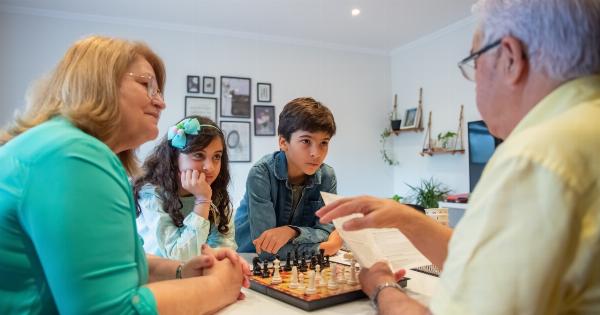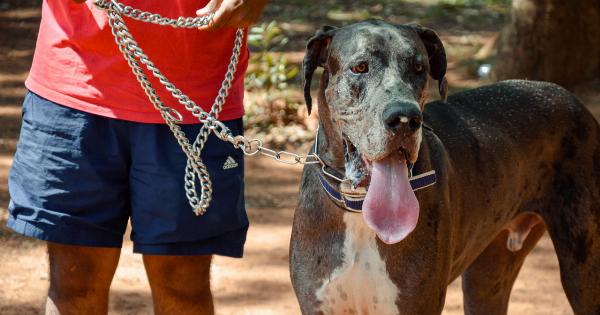It’s a common occurrence for children to be attracted to dogs, wanting to pet and play with them, not realizing that the canine in front of them might be unfamiliar and unpredictable.
Children can often initiate their approach by running towards the dog or leaning their face over the dog’s head to give them a kiss, putting themselves in danger of getting bitten or mauled. Therefore, it is essential for parents and guardians to educate children about the safety aspects of approaching an unfamiliar canine. Here are some techniques for teaching children to avoid approaching an unfamiliar dog:.
Understanding Dog’s Body Language
Dogs communicate through their body language, displaying different postures and expressions, highlighting their moods and intentions. Children need to learn how to interpret canine body language to recognize the signs of an unhappy, aggressive dog.
Teach your children to avoid a dog that displays the following signs:.
- Growling or snarling
- Stiff or frozen body posture
- Bared teeth
- Direct eye contact
- Tail down or between legs
If the dog displays any of the signs mentioned above, it is best to avoid approaching that dog.
Ask Permission Before Approaching The Dog
Children should learn to ask permission from the dog owner before approaching the canine. It is important to make sure that the owner gives the green signal and takes responsibility for the dog’s behavior.
The owner knows the dog’s temperaments and can guide the child accordingly, keeping in mind the safety of both the dog and the child.
Be Gentle and Calm
Teach your children to be gentle and calm while approaching a dog. Sudden movements and loud noises can scare the dog, and they might react aggressively to defend themselves.
Tell your children to approach slowly, keeping their hands visible, and avoid making any sudden movements. Once in contact, they should pet the dog gently, avoiding pulling their tails or ears.
Never Run Towards The Dog
Running towards an unfamiliar dog can be a significant safety hazard. Teach your children to avoid running towards dogs, as it might trigger the chase instinct, leading to an attack.
Even if the dog seems friendly and playful, children should always maintain a safe distance while interacting with the canine.
Do Not Disturb The Dog While Eating Or Sleeping
Dogs can get extremely territorial while eating or sleeping, and disturbing them in such instances can lead to aggressive behavior.
Teach your children to recognize these signs and avoid approaching or disturbing the dog during their mealtime or naptime. If your children encounter a sleeping or eating dog, they should avoid getting too close, making any sudden movements, or loud noises, as it might awaken the dog and startle them.
Remove The Focus From The Dog
Children attracted to dogs may focus too much on the canine, leading them to get too close. Teach children to move their focus away from the dog, distracting them with other objects or activities.
For example, children could play with a ball or a frisbee, involving the dog in the game while maintaining a safe distance. This technique can keep children from approaching the dog too closely and help them understand the importance of maintaining safe distances.
Teach Your Child To Act Like A Tree
If a child encounters an aggressive dog, they should be taught to act like a tree. Standing still and keeping their arms and hands close to their bodies can prevent the dog from seeing them as prey and avoid any unwanted physical contact.
The child should avoid eye contact with the dog and silently wait for the dog to pass or for an adult to come to their rescue.
Always Watch The Dog’s Tail
A wagging tail is usually a sign of a happy and friendly dog. However, some dogs can wag their tails while being aggressive. Teach your children to focus on the dog’s tail to understand their mood and intentions.
If the dog is wagging its tail high with a stiff body posture, this is a sign that the dog is not friendly and should be avoided.
Encourage The Child To Speak Up
Teach children to speak up when they feel threatened or uncomfortable while approaching any unfamiliar canine.
Encourage them to say “no” or “stop” in a clear and loud voice if they feel scared or threatened by the dog’s behavior, making sure the owner hears it, and takes the necessary action to control their dog.
Conclusion
It is essential to teach children to avoid approaching unfamiliar dogs and focus on their safety. Encourage them to recognize the dog’s body language, ask permission before approaching the canine, and maintain safe distances during interactions.
Children should learn to be gentle and calm while approaching the dog, never run towards them, and not disturb them while eating or sleeping. Lastly, teach your child to act like a tree if they feel uncomfortable or threatened by the dog’s behavior. By following these techniques, you can keep your children safe and help them develop a healthy relationship with dogs.






























